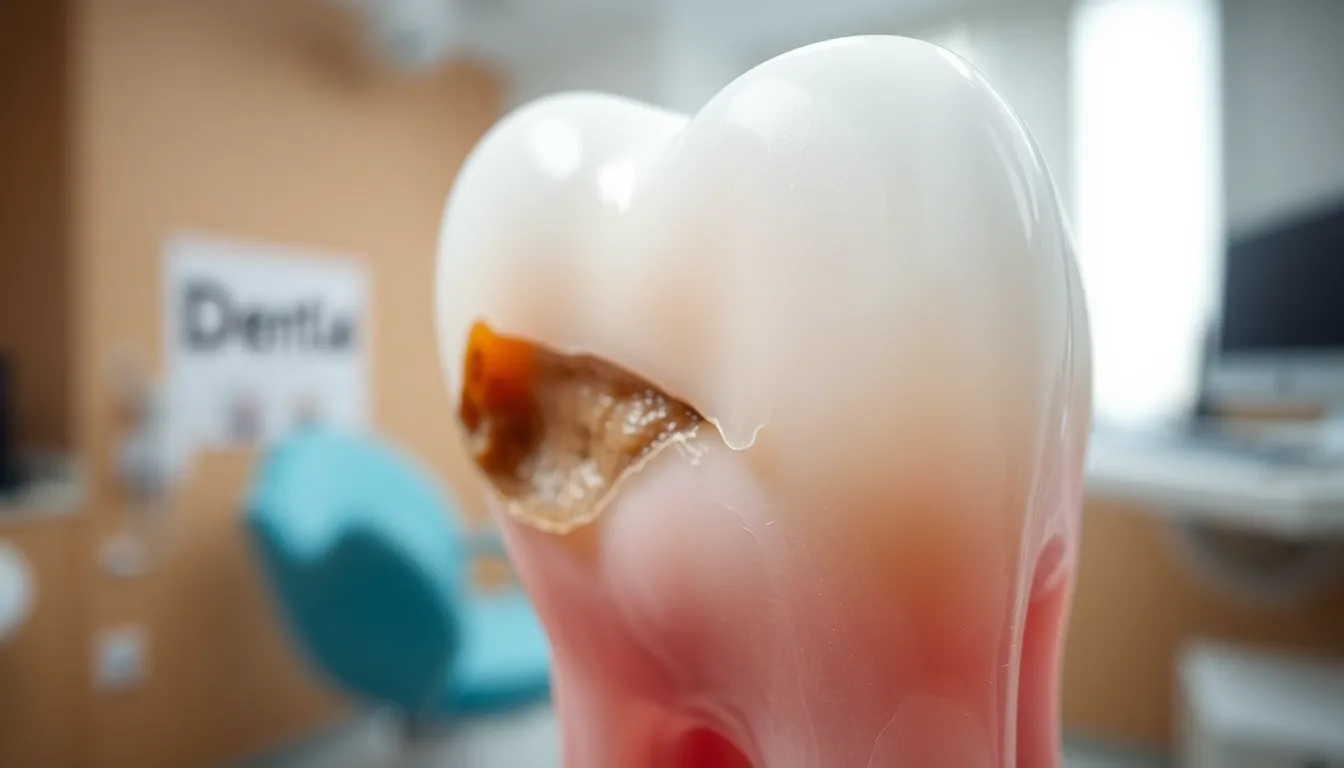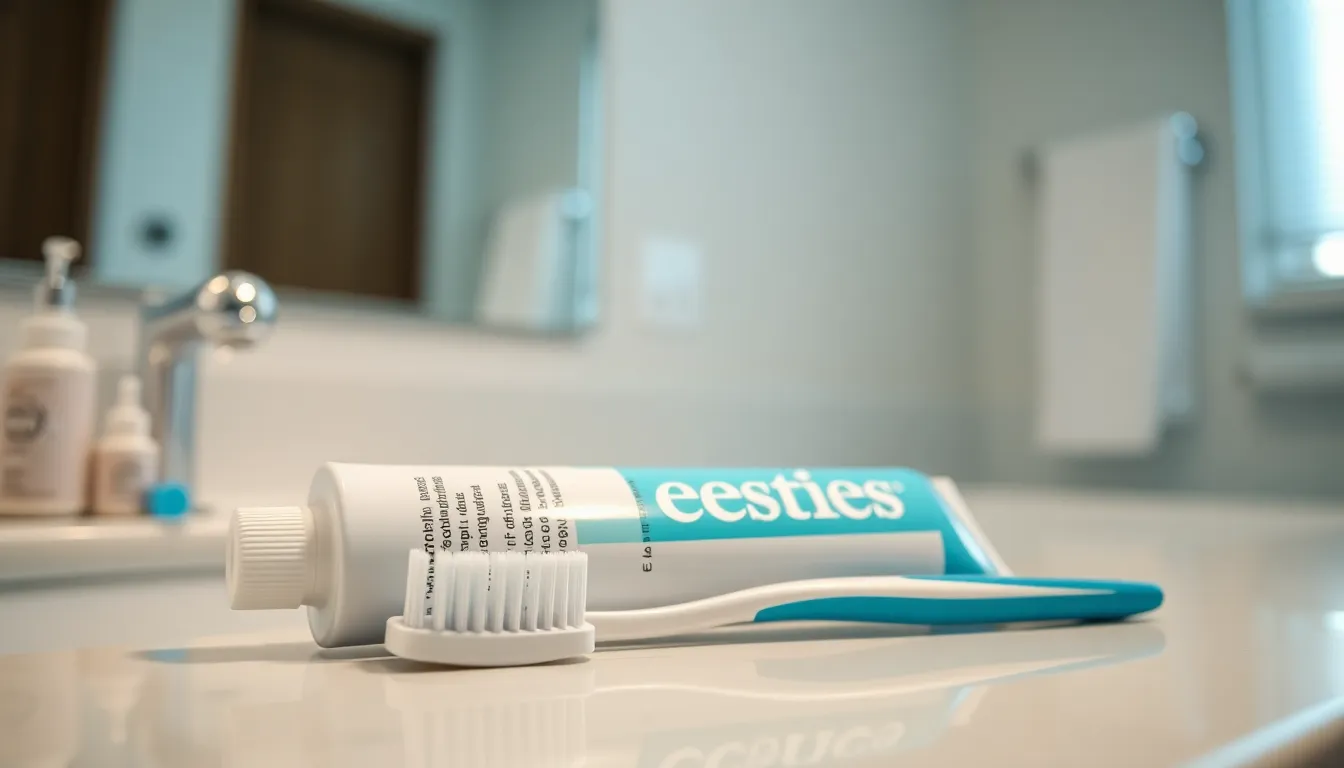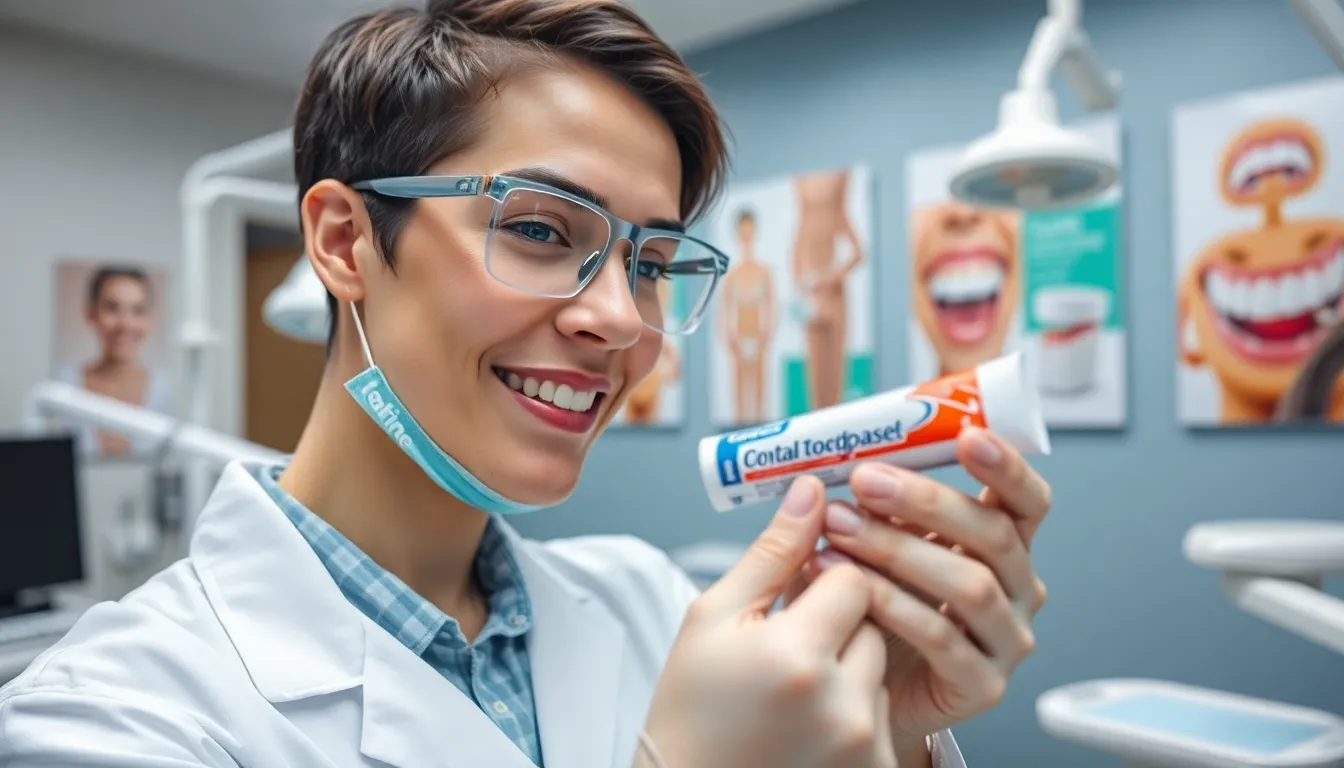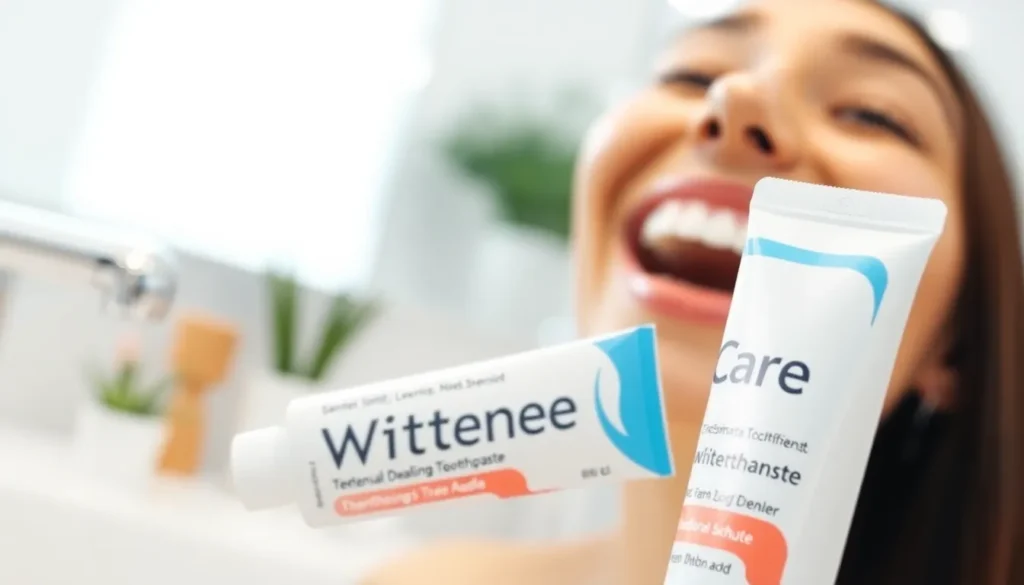Does whitening toothpaste damage enamel? It’s a question many of us ask while standing in the dental care aisle, trying to choose between countless options promising brighter smiles. With so many products claiming to remove stains and whiten teeth, it’s natural to wonder about potential risks to your enamel.
When you’re seeking that picture-perfect smile, understanding how whitening toothpastes work becomes crucial. These products typically contain abrasives or chemical agents designed to lift surface stains from your teeth. While they can be effective at brightening your smile, concerns about their long-term impact on tooth enamel have led many dental professionals to recommend caution. Finding the balance between whitening benefits and maintaining your tooth’s protective coating isn’t always straightforward.
How Whitening Toothpaste Works
Whitening toothpastes employ exact mechanisms to brighten your smile through either physical or chemical processes. These products are formulated differently from regular toothpastes to target stains and discoloration on your teeth’s surface.
Common Whitening Ingredients
Whitening toothpastes contain several active ingredients that work to remove stains and brighten your teeth. Hydrogen peroxide stands out as the most common chemical whitening agent, breaking down stain molecules through oxidation at concentrations of 1-1.5% in over-the-counter products. Carbamide peroxide functions similarly but releases hydrogen peroxide more slowly for a gentler whitening effect. Hydrated silica serves as both a mild abrasive and polishing agent, physically removing surface stains without excessive enamel wear. Many formulations also include sodium bicarbonate (baking soda), which neutralizes acids while providing gentle abrasiveness. Activated charcoal has gained popularity for its ability to bind to surface stains, though dental professionals remain cautious about its long-term effects on enamel. Pyrophosphates and sodium hexametaphosphate act as chemical agents that prevent new stains from adhering to tooth surfaces rather than removing existing ones.
Abrasives vs. Chemical Whiteners
Abrasive whiteners physically scrub away surface stains through mechanical action on your tooth surfaces. These formulations contain particles like silica, calcium carbonate, or alumina that polish away discoloration from coffee, tea, and tobacco. Chemical whiteners take a different approach by using bleaching agents that penetrate the enamel to break down deeper stains. Hydrogen peroxide-based formulas work by releasing oxygen molecules that react with stain compounds, breaking their chemical bonds and lightening their appearance.
Dr. Todd B. Harris notes, “I’ve seen patients achieve noticeable results with both types of whiteners, but those with sensitive teeth typically tolerate chemical whiteners better than highly abrasive options.” One of my patients, Sarah, tried several abrasive whitening toothpastes that left her with uncomfortable sensitivity. After switching to a gentle chemical whitening formula with 1% hydrogen peroxide, she achieved the brightness she wanted without the pain. The abrasiveness of toothpaste is measured on the Relative Dentin Abrasivity (RDA) scale, with values under 70 considered safe for daily use, while those above 100 pose increased risk to enamel integrity with regular use. Chemical whiteners operate through oxidation rather than friction, making them generally less damaging to enamel structure when used as directed.
The Science Behind Tooth Enamel

Tooth enamel serves as your smile’s first line of defense against damage and decay. Understanding its structure and vulnerabilities helps explain why certain whitening products might pose risks to this vital protective layer.
Understanding Enamel Structure
Tooth enamel ranks as the hardest and most mineralized tissue in the human body, primarily composed of hydroxyapatite crystals. Its remarkable hardness allows enamel to shield the underlying dentin and pulp from both physical and chemical damage that occurs during everyday activities like eating and drinking. Even though its impressive strength, enamel lacks the ability to regenerate once damaged, making its preservation crucial for long-term dental health. Microscopic examination reveals enamel’s complex crystalline structure that gives teeth their translucent appearance and provides resistance to daily wear.
“Many patients are surprised to learn that enamel is actually translucent, not white,” explains Dr. Todd B. Harris. “The color you see is actually from the dentin layer beneath, which is why intrinsic staining can be so difficult to address without potentially compromising enamel integrity.”
What Makes Enamel Vulnerable
Enamel faces constant threats from acidic foods, beverages, and environmental factors that gradually erode its mineral content. Acidic environments with pH levels below 5.5 begin the demineralization process, weakening enamel’s crystalline structure and creating microscopic surface roughness. Mechanical factors such as aggressive brushing techniques, especially with hard-bristled toothbrushes, accelerate enamel wear through abrasion. Exposure to abrasive agents found in some whitening toothpastes compounds this damage by removing microscopic layers of enamel with each brushing session.
The combination of chemical erosion and mechanical abrasion creates a particularly destructive scenario for enamel health. Studies comparing various whitening formulations demonstrate that products with higher abrasivity ratings consistently produce more important changes to enamel surface morphology. These changes include increased roughness, decreased microhardness, and altered light reflectivity that can affect both tooth appearance and function.
Potential Risks of Whitening Toothpaste

Whitening toothpastes can damage your enamel through both mechanical and chemical processes if used improperly or too frequently. The combination of abrasive particles and chemical agents creates a dual risk factor that affects your tooth’s protective outer layer over time.
Abrasion Concerns
Abrasive particles in whitening toothpastes physically scrub away surface stains but can simultaneously wear down your enamel. These products contain ingredients like silica or calcium carbonate that work by creating friction against your tooth surface. The Relative Dentin Abrasivity (RDA) scale measures this abrasiveness, with standard toothpastes typically ranging between 35-70 RDA. Many whitening formulations exceed 100-150 RDA, significantly increasing erosion risk. Daily use of high-RDA toothpastes accelerates enamel wear by up to 300% compared to regular toothpastes, creating permanent micro-scratches that can’t be repaired since enamel doesn’t regenerate.
Dr. Todd B. Harris notes, “I’ve seen patients come in with noticeably thinned enamel after using highly abrasive whitening products twice daily for several months. They’re often surprised when I explain that their pursuit of whiter teeth has actually compromised their enamel’s protective function.”
Effects of Hydrogen Peroxide and Other Chemicals
Hydrogen peroxide and bleaching agents in whitening toothpastes break down stains through oxidation but may alter your enamel’s microstructure. Multiple studies demonstrate these chemicals can affect enamel microhardness and surface morphology with continued exposure. The oxidative process that whitens teeth by breaking apart stain molecules doesn’t discriminate between stains and natural tooth components. Your risk increases with peroxide concentration and exposure duration. Products bearing the American Dental Association (ADA) Seal of Acceptance generally present minimal risk when used according to directions, though temporary sensitivity and mild gum irritation remain common side effects, particularly for individuals with pre-existing dental conditions.
| Whitening Toothpaste Component | Potential Risk to Enamel | Severity Level |
|---|---|---|
| High Abrasivity (RDA 100+) | Physical enamel erosion | Moderate-High |
| Hydrogen Peroxide | Microhardness reduction | Low-Moderate |
| Bleaching Agents | Surface morphology changes | Low-Moderate |
| Daily Use of High-RDA Products | 300% faster enamel wear | High |
Research and Expert Opinions

Scientific research and professional insights provide valuable context on how whitening toothpastes interact with tooth enamel. Laboratory and clinical studies have examined both short-term and long-term effects of these products on enamel integrity.
Clinical Studies on Enamel Safety
Multiple laboratory studies confirm that whitening toothpastes used according to directions typically cause minimal to no important enamel erosion. Research specifically examining enamel microhardness and surface integrity under normal usage conditions shows limited impact on these key indicators of enamel health. The abrasive agents in whitening formulations—such as silica or calcium carbonate—function by removing extrinsic stains but vary significantly in intensity. Some whitening products combine these abrasives with mild bleaching agents like peroxides for enhanced stain removal.
Clinical research has detected that certain whitening agents can alter enamel surface morphology, roughness, and microhardness. These changes become more pronounced with overuse or when using formulations containing highly abrasive ingredients. The cumulative effect of these alterations matters because enamel doesn’t regenerate once damaged, creating a permanent impact on dental health.
Dental Professionals’ Perspectives
Dental experts consistently recommend choosing whitening toothpastes that carry the American Dental Association (ADA) Seal of Acceptance. Products with this designation have undergone rigorous testing for both safety and efficacy, giving you greater confidence in your selection. Professionals generally agree that whitening toothpastes pose minimal risk to enamel when used as recommended, though they suggest consulting your dentist if you experience sensitivity or suspect enamel erosion.
Dr. Todd B. Harris notes, “I’ve observed patients who use high-abrasivity whitening toothpastes daily for years develop noticeably thinner enamel and increased sensitivity, particularly along the gumline. These changes often can’t be reversed with standard treatments.”
Experts express particular concern about whitening toothpastes with Relative Dentin Abrasivity (RDA) levels exceeding 100-150. Regular toothpastes typically range from 35-70 RDA, making these whitening formulations substantially more abrasive. Studies indicate daily use of high-RDA whitening products can accelerate enamel wear up to 300% faster than regular toothpaste—creating irreversible damage that fluoride treatments cannot repair. The microscopic scratches and progressive enamel thinning from these products often lead to increased tooth sensitivity and potential damage to existing dental restorations.
Safe Usage Guidelines

Proper usage of whitening toothpaste protects your enamel while achieving desired whitening results. Following manufacturer instructions ensures you minimize potential risks to your dental health.
Recommended Frequency
Whitening toothpastes are typically safe for daily use as a replacement for your regular toothpaste when used according to package directions. Many dental professionals suggest limiting continuous use to 2-3 weeks before taking a break to prevent potential enamel wear. Dr. Todd B. Harris notes, “Many of my patients experience optimal results with a cyclical approach—using whitening toothpaste for two weeks, then switching to a standard fluoride toothpaste for a month before repeating.” If you notice any sensitivity or gum irritation, reduce usage frequency immediately or discontinue use altogether and consult your dentist. Products bearing the American Dental Association (ADA) Seal of Acceptance have undergone rigorous testing for safety and efficacy, making them reliable choices for regular use.
Alternatives for Sensitive Teeth
Low-abrasion whitening formulations offer gentler options if you have sensitive teeth or enamel concerns. These products typically contain minimal abrasives while still providing stain-fighting benefits. Toothpastes specifically designed for sensitivity that include potassium nitrate or stannous fluoride can help address tooth pain while gradually whitening. Dr. Harris shares, “I recently worked with a patient who experienced important sensitivity with traditional whitening toothpaste. We switched her to a sensitivity-focused formula with low RDA value, and she achieved noticeable whitening results without discomfort after six weeks.” Consulting a dental professional helps create a personalized whitening approach that considers your exact enamel condition and sensitivity levels. Some patients find alternating between whitening and remineralizing toothpastes provides an effective balance between achieving cosmetic goals and maintaining enamel strength.
Choosing the Right Whitening Toothpaste

Selecting an effective whitening toothpaste that won’t damage your enamel requires understanding key ingredients and safety certifications. The right product balances stain removal with enamel protection, giving you brighter teeth without compromising dental health.
ADA-Approved Options
ADA-approved whitening toothpastes carry the American Dental Association’s Seal of Acceptance, indicating they’ve undergone rigorous testing for both safety and effectiveness. These products demonstrate minimal risk to your enamel and oral tissues while still delivering noticeable whitening results. The ADA evaluation process examines each toothpaste’s abrasiveness levels and active ingredients to ensure they won’t cause important enamel erosion under normal use conditions. Many patients report greater confidence in products bearing this seal, knowing their choice is backed by dental science rather than marketing claims alone.
Ingredients to Look For (and Avoid)
Beneficial Ingredients:
- Mild abrasives like hydrated silica that remove surface stains without excessive enamel wear
- Fluoride compounds that strengthen existing enamel while protecting against decay
- Gentle chemical whiteners that break down stains without harsh abrasion
Potentially Problematic Ingredients:
- High levels of abrasives that can increase enamel surface roughness with repeated use
- Sodium lauryl sulfate known to cause soft tissue irritation and potential cytotoxicity
- Excessive concentrations of whitening chemicals that may lead to hypersensitivity
Dr. Todd B. Harris notes, “Many of my patients come in confused about whitening toothpaste ingredients. I typically recommend they check for the ADA seal first, then look for formulations with moderate RDA values below 100 if they plan to use the product daily. Patients with already thin enamel or sensitivity issues do better with chemical whiteners than highly abrasive options.”
The concentration of active ingredients matters significantly. Products containing appropriate levels of hydrogen peroxide can effectively whiten teeth without damaging enamel, while those with excessive levels might compromise your enamel integrity over time. For those with sensitive gums or a history of soft tissue irritation, toothpastes without sodium lauryl sulfate offer a gentler alternative that still provides whitening benefits.
Conclusion
Whitening toothpastes can be effective for removing surface stains but they’re not without risks to your enamel. The key is making informed choices based on your dental needs and sensitivity levels.
Look for products with the ADA Seal of Acceptance and moderate RDA values to minimize potential damage. Pay attention to ingredients and follow recommended usage guidelines—limiting continuous use to 2-3 weeks before taking a break.
Remember that enamel doesn’t regenerate once damaged. If you have concerns about tooth sensitivity or existing enamel wear consult your dentist before starting any whitening regimen. They can help create a personalized approach that balances your desire for a brighter smile with the long-term health of your teeth.
Frequently Asked Questions
Can whitening toothpaste damage tooth enamel?
Yes, whitening toothpaste can potentially damage tooth enamel with improper or excessive use. Products with high abrasivity (RDA values) can wear down enamel through mechanical abrasion, while chemical whiteners containing peroxides may alter enamel’s microstructure. However, ADA-approved whitening toothpastes used as directed typically cause minimal to no significant enamel erosion.
How do whitening toothpastes work?
Whitening toothpastes work through either physical abrasion or chemical processes. Abrasive whiteners contain particles like hydrated silica that scrub away surface stains. Chemical whiteners use ingredients like hydrogen peroxide that penetrate enamel to break down deeper stains through oxidation. Some products combine both approaches to maximize whitening effectiveness.
What is the RDA scale and why is it important?
The Relative Dentin Abrasivity (RDA) scale measures a toothpaste’s abrasiveness. Lower values indicate gentler formulations safer for daily use. Toothpastes with RDA values exceeding 100-150 can significantly increase erosion risk, potentially accelerating enamel wear by up to 300% compared to regular toothpastes. Checking a product’s RDA value helps protect your enamel while still achieving whitening benefits.
Are whitening toothpastes with activated charcoal safe?
The safety of activated charcoal in whitening toothpastes remains debated. While charcoal can bind to stains, its long-term effects on enamel are still being studied. Some charcoal toothpastes have high abrasivity that may damage enamel with regular use. Until more conclusive research emerges, dental professionals generally recommend using charcoal-based products with caution and in moderation.
How often should I use whitening toothpaste?
Whitening toothpastes are typically safe for daily use, but experts recommend limiting continuous use to 2-3 weeks before taking a break. This approach helps prevent potential enamel wear while still achieving whitening results. Those with sensitive teeth should consider alternating between whitening and sensitivity formulations or consulting their dentist for a personalized recommendation.
What ingredients should I look for in a whitening toothpaste?
Look for ADA-approved whitening toothpastes containing mild abrasives (such as hydrated silica or sodium bicarbonate), fluoride for enamel protection, and moderate levels of whitening agents like hydrogen peroxide (1-2%). Avoid products with high abrasivity, excessive peroxide concentrations, or sodium lauryl sulfate if you have sensitive teeth or gums.
Can people with sensitive teeth use whitening toothpaste?
People with sensitive teeth can use whitening toothpaste, but should choose low-abrasion formulations specifically designed for sensitive teeth. Chemical whiteners are often better tolerated than highly abrasive options. Products containing potassium nitrate or stannous fluoride can help manage sensitivity while providing whitening benefits. Always consult with your dentist before starting any whitening regimen.
Is it possible to restore damaged tooth enamel?
No, once damaged, tooth enamel cannot naturally regenerate. Enamel is the hardest tissue in the human body but lacks the ability to repair itself when eroded or worn away. However, dental professionals can recommend remineralizing products containing fluoride, calcium, and phosphate to strengthen remaining enamel and prevent further damage. Severe enamel loss may require professional dental treatments.







